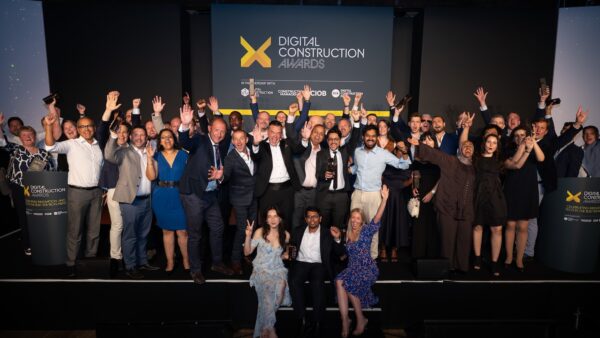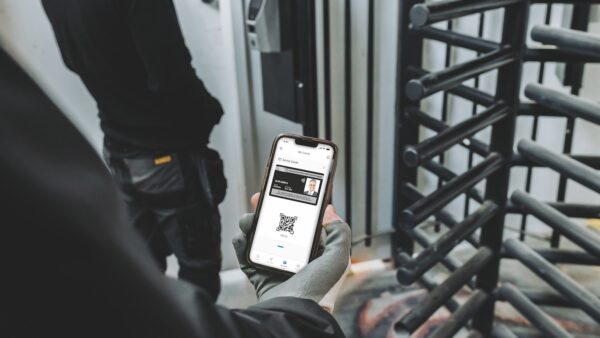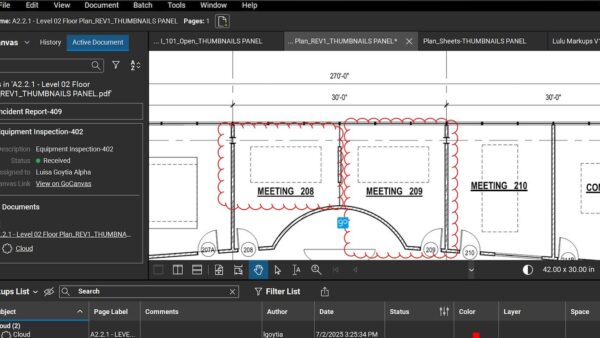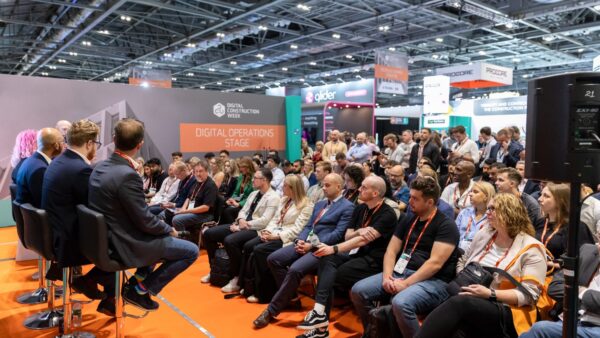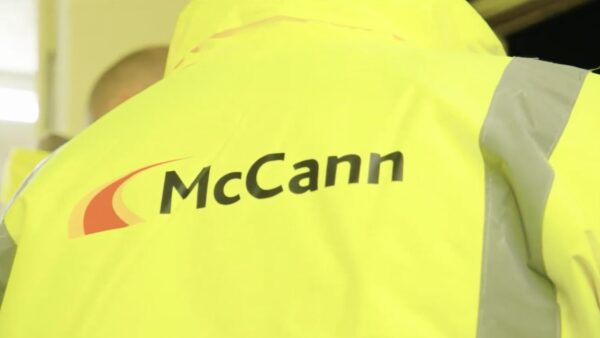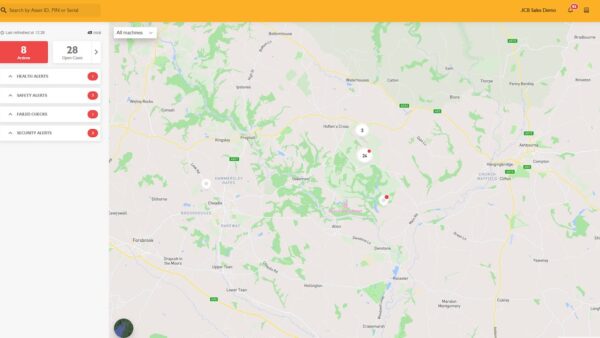
It’s time to take stock of the industry’s digital progress. Who better to do so than someone who has been at the centre of it? Mark Enzer OBE FREng shares his thoughts on technology’s development path and where it may lead.
Mark Enzer has recently been appointed as a member of the Prime Minister’s Council for Science and Technology, co-chaired by Dame Angela McLean, the government’s chief scientific adviser, and Lord Browne, former head of BP.
“It is fascinating,“ reports Enzer. “To start with, it is seriously interesting to listen and learn from such informed people, and it’s really encouraging to see so much joined-up thinking.”
Enzer is the former CTO of consultancy Mott MacDonald, and is now a Mott MacDonald Fellow. He was seconded for two years to the Centre for Digital Built Britain (CDBB) at the University of Cambridge until its closure when funding finished in April 2022. He was both the director of CDBB and the head of the National Digital Twin programme. As such, he has been at the forefront of digital transformation, viewing it all through the lens of systems thinking and seeing the big strategic picture.
Fresh from a stock-taking presentation at the recent FutureBuild conference in London, CM Digital caught up with him to get his views, particularly on how far he thinks the industry has come on its digitalisation journey – and we ask, just how well is it doing?
In a wide-ranging discussion, Enzer emphasises the importance of data-driven decisions and interoperability between systems. He says that successful digitalisation should not only enhance efficiency, but also contribute towards improving wider outcomes for people and nature.
CM Digital: How well do you think the digitalisation of construction is going?

“We probably can’t score ourselves very highly overall, because we haven’t delivered on all the promises of digitalisation. Our progress is patchy and not joined up.”
Mark Enzer: There are many good examples of people doing some great things around the industry – the application of data and digital in health and safety, making sites safer, is just one example. But if we look at the things which data and digital are about and what they’re trying to do, we probably can’t score ourselves very highly overall, because we haven’t delivered on all the promises of digitalisation. Our progress is patchy and not joined up.
For me, digitalisation is fundamentally about people. It’s about enabling people to use information better to make better decisions; it’s about enabling people to improve processes so that we are not just doing the same thing that we always did, but we’re actually enhancing how we do things; it’s about enabling people to apply and integrate technology well. I’m convinced we could be much better at all of those things. What we tend to do is think that technology is the answer – a silver bullet to solve all our problems, but it does not work that way. Technology is an enabler of the solution, it’s not the solution itself.
Then there is the issue of consistency. There is a tendency for each major project to be set up and delivered in a different way, so we don’t build on hard-learnt good practice. As an example, each project seems to set up its own approach to a common data environment (CDE) and, in some cases, there are many CDEs on a single project, so it’s not really common at all. Therefore, there is real friction to the flow of information through the processes across the life of a project, which therefore blocks the value that digitalisation could bring.
Put simply, the value of digitalisation is in making better decisions faster, and this depends on getting the right information to the right people at the right time (within the process) to make the right decision.
We all understand why there is this inconsistency. It’s because of the fragmented nature of our industry, where every project is unique and every client has different requirements. I’m not saying everybody has to use one system, but we’re still in a wild west with people doing their own thing. So, this is not an argument for a ‘one-size-fits-all’ approach, but it is a call to identify good practice and share it in a coordinated way. A little bit of coordination would go a long way.
If we were getting it right, what would that enable us to do? Why is it important to have this consistency?
The whole idea about digitalisation is to make better decisions faster to improve delivery. And if we were getting this right, then we would be seeing the improvement in productivity. Clearly, we haven’t really got there yet, but the promise still stands.
The work that has been done in developing ISO 19650, which followed on from the UK’s BS 1192, is world-leading. So the foundations are there, but the issue is in the consistent adoption across the industry.
How could this be changed?
Part of the issue is that there is no body to own the overall strategy and to drive best practice. It would make a huge difference simply to have a coordinated approach to identifying good practice and sharing it for the benefit of the whole industry. Each year, hundreds of billions of pounds flow through the construction industry. Wouldn’t it be amazing if the tiniest fraction of that could be directed towards a coordinated approach to data and digital transformation in the industry?
“We should not be distracted by the shininess of (new) technology. We must find ways of looking after useful information irrespective of the technology that serves it.”
Organisations like nima do an amazing job of promoting better information management, but they do it on a shoestring. I think that the industry needs more.
While we cannot predict the future of technological development, we can recognise trends and see the persistent issues that need attention. For example, it is clear that information has value beyond the technologies that process it. This means that we should not be distracted by the shininess of (new) technology, but rather we must find ways of looking after useful information irrespective of the technology that serves it.
There will always be many different systems for many different purposes. What is important is that those systems can work together. This means we should value interoperability and pursue integration between technologies.
But is that down to the people who use these systems, or is it something the manufacturers must sort out?
Interoperability and integration is definitely something that the suppliers can help with, but they will need a signal from the market that it is required. While suppliers are motivated to provide interoperability between their own products, they are unlikely to connect to others without incentivisation.
We know that interoperability and integration is ultimately better for everyone, but this needs leadership that transcends the competition within the market. Clients are in a good position to require that the systems they get are interoperable.
And if we were really unlocking the value of all this data, what would that look like?
It’s a big question, and I’d like to give a big-picture answer. I think that if we were truly to unlock the value of data in the built environment, then we would see people and nature flourishing together for generations. That is what the built environment should be doing for us now. And our job in the industries that serve it should be to enable the built environment to achieve that grand purpose.
Then, we would be using technology and information to understand our built and natural systems better so that we can intervene more effectively and get better outcomes. The big prize, and the promise of data and digital transformation, is to get better outcomes per pound.
“If we were truly to unlock the value of data in the built environment, then we would see people and nature flourishing together for generations.”
Yes, we must improve the productivity in projects delivering new assets. But there’s an even bigger issue. And that is improving the performance of the built environment that we’ve already got. In reality, we have to do both: improve the productivity of projects that deliver ‘outputs’, and improve the performance of our built systems that enable ‘outcomes’.
If we take healthcare as one example. Building a new hospital well would produce a good output. However, as a society, what we really want are better health outcomes – healthy, happy people. And the built environment, as a whole, can contribute to that in so many ways, such as: healthy transport options, clean air and green spaces. All these things contribute to better health outcomes. Hospitals are part of it, but hospitals are really for treating people who are already sick. There’s a lot we can do in the built environment that can help people to be healthy so they never even have to get to the hospital.









